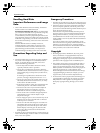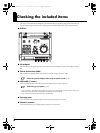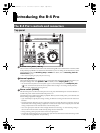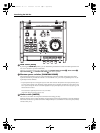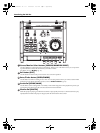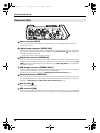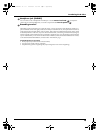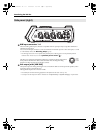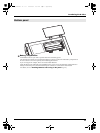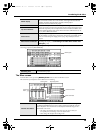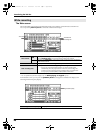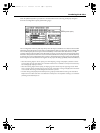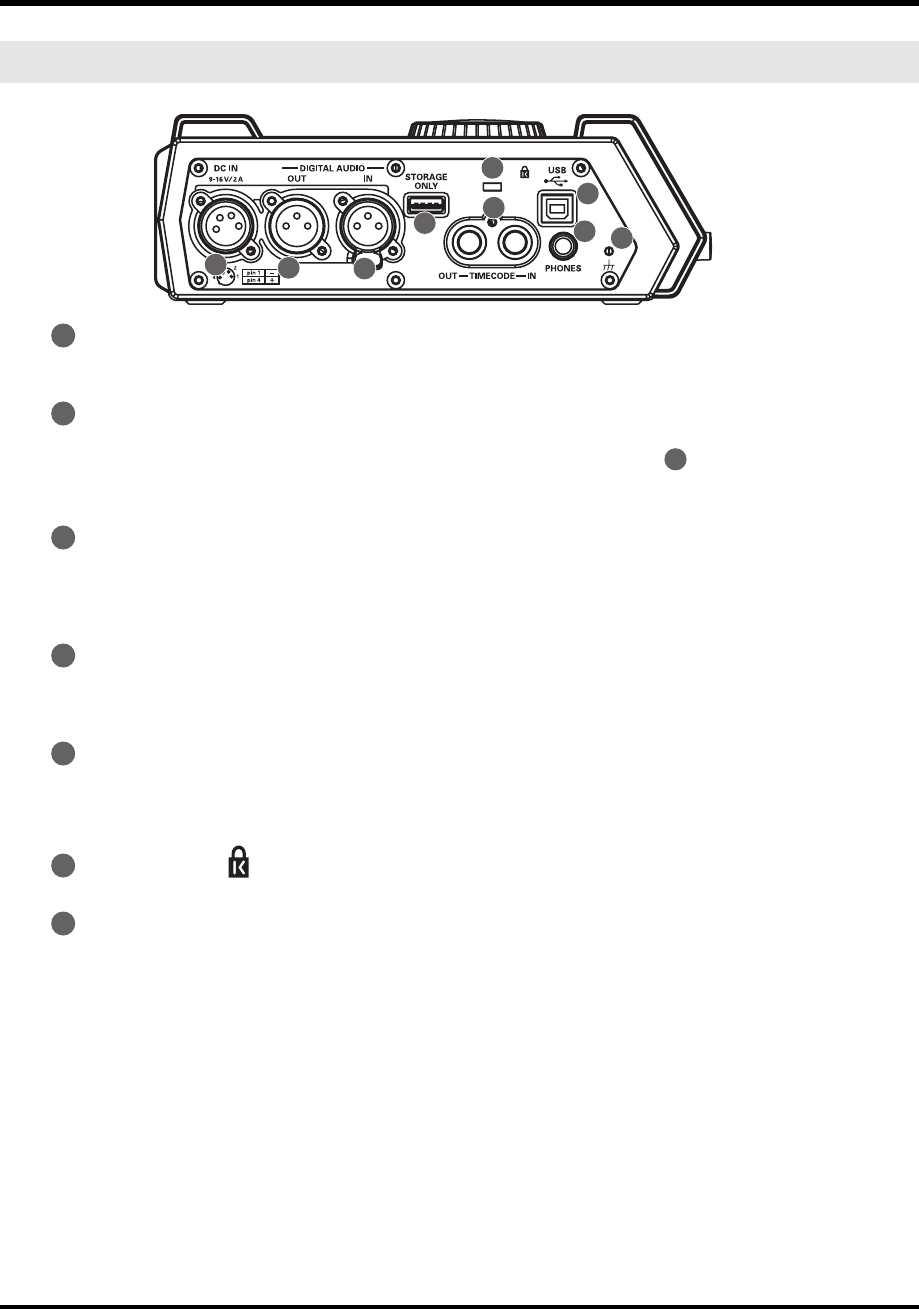
14
Introducing the R-4 Pro
Power connector [DC IN]
You can connect either the included power conversion cable or a commercially available cable for an
external power device.
Digital output connector [DIGITAL OUT]
This connector outputs a digital signal. You can digital devices, such as speakers or mixers, with an XLR
type cable. This connector provides the same audio signal as the headphone jack (), but in digital form.
(AES/EBU, IEC 60958-4 compliant)
* Volume cannot be adjusted with the monitor level knob.
Digital input connector [DIGITAL IN]
If you want to record a digital signal, connect a XLR type cable to this connector. The digital input signal is
recorded in stereo on channels 1L and 1R. If you want to record in monaural, you’ll need to change the Rec
Mode setting in the System Settings menu. For details, refer to “1 Recording Setup” (p. 72). (AES/EBU,
IEC 60958-4 compliant)
USB Storage connector [STORAGE ONLY]
You can connect commercially available USB external memory devices to this connector. You can backup
projects recorded with the R-4 Pro to USB memory or USB hard disks.
For details on external memory devices, see Handling external memory device (p. 79)
Timecode Connector [TIMECODE]
You can connect devices with a timecode port. This allows you to records the timecode in the R-4 Pro when
the recording starts (IN) and to output the R-4 Pro internal timecode (OUT). For details on recording the
timecode, see Connecting to a video device with a timecode port (p. 84).
988
Security Slot [ ]
http://www.kensington.com/
USB connector [USB]
You can use the included USB cable to connect the R-4 Pro to your computer to move or copy projects that
were recorded on the R-4 Pro. You can also move or copy files from your computer the R-4 Pro’s hard disk.
Side panel (left)
29
28
30
32
35
33
34
27
31
27
28
34
29
30
31
32
33
R-4_e_new.book 14 ページ 2006年11月20日 月曜日 午後1時9分



